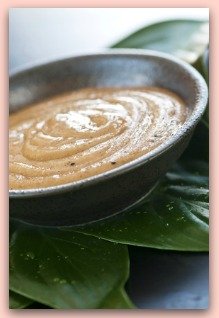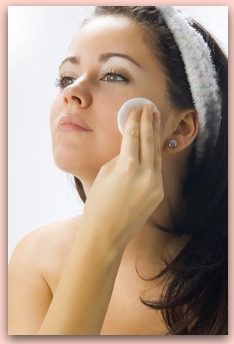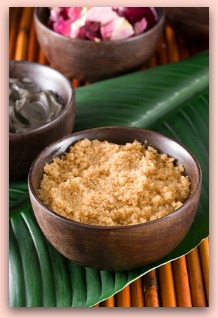The Best Exfoliator
How to Exfoliate the Face and Body
Discover the best exfoliator types for dry, oily, and sensitive skin. Learn how to exfoliate skin on the feet, body, and face without causing prolonged redness.
Finding the best exfoliator for your skin type can make a big difference in the appearance and texture of your skin, especially years down the road as your skin begins to age.
There are physical and chemical exfoliants to consider, as well as different methods for exfoliating the body, the face, and the more difficult areas of the feet.
Types of Exfoliating Cleansers

The first type of facial exfoliant is chemical, and thus uses different chemicals to eat away the top layer of skin to reveal a newer one below.
This is often one of the better options for dry skin, acne, and women who want to diminish fine lines.
Look for a cleanser or scrub that contains salicyclic acid, retinoic acid, glycolic acid, or alpha or beta-hydroxy acids in the main ingredients.
Chemical exfoliants can be as simple as an everyday face cleanser, to as complex as a dermatologist-performed acid peel.
Another offshoot of chemical exfoliants are enzyme exfoliants, which are a good option for sensitive skin. These enzymes come from fruits, especially those with a lot of Vitamin C.
Enzyme exfoliants gently remove the top layer of skin, and aren’t as harsh as other chemicals.
The second type of exfoliant is physical, and usually comes in the form of granules, micro beads, cloths, sugar and salt scrubs, exfoliating pads or brushes. These can be great for women with non-sensitive, especially oily, skin.
For many, however, physical exfoliants are better saved for the body and feet because they may be too harsh on delicate facial skin.
How to Use Exfoliating Grains

Sharp granules from apricot seed and walnut shell can cause microscopic tears, leading to dry, red skin. Gently apply these scrubs in a circular motion all over.
Skin on the body is very different from that on one’s face, and can stand up to a lot more.
Loofahs, body scrubs, and exfoliating pads work well for exfoliating all over in as little time as possible. It is usually best to exfoliate 1-3 times per week depending on how sensitive your skin is.
Caring for the heels and calluses on the feet uses completely different methods. The first step is to soak your feet in warm water for at least fifteen minutes. This will loosen the dead skin and make it easier to remove it.
Then, use an exfoliating pad or pumice stone to begin scraping away at the toughest areas. Aim to exfoliate your heels lightly each day until they are as smooth you’d like.
Exfoliating too much in one session can encourage your skin to replace itself too quickly, leading to more calluses and tough heels.
Make a Homemade Exfoliator

No matter what part of your body you plan to exfoliate, always follow up with a moisturizer to repair and protect new skin cells.
Even the best exfoliator can cause dry, itchy skin without a following moisturizer.
Mix one cup white or brown sugar with a half cup of either milk or olive oil, and place in a bowl next to the sink.
Wet your face and use your fingers to gently apply the sugar mixture, working it gently in small circles over your skin. Rinse thoroughly and dispose of the leftover sugar scrub.
Return to Makeup Tips Home from The Best Exfoliator

Tips and Kits

Most Popular Articles

Tips and Kits

Most Popular Articles




